- Home
- international
- news
- Photos show the US Army's largest watercraft carrying equipment to build a floating pier in Gaza
Photos show the US Army's largest watercraft carrying equipment to build a floating pier in Gaza
Lauren Frias

- The US Army dispatched its largest vessel to the eastern Mediterranean on March 9.
- USAV Frank S. Besson is delivering equipment to build a temporary pier off the coast of Gaza.
USAV Gen. Frank S. Besson departed for the Eastern Mediterranean on March 9 with equipment and supplies to build a temporary pier off the coast of Gaza.
It was soon joined by four more Army watercraft carrying materials for the pier, followed by four more that will be deployed over the next month.
The temporary pier is part of a US effort to "do more" to support Palestinians living in the war-torn enclave. At least a quarter of the population in the Gaza Strip is on the brink of famine, the UN Office for the Coordination of Humanitarian Affairs said.
The US Army's biggest ships
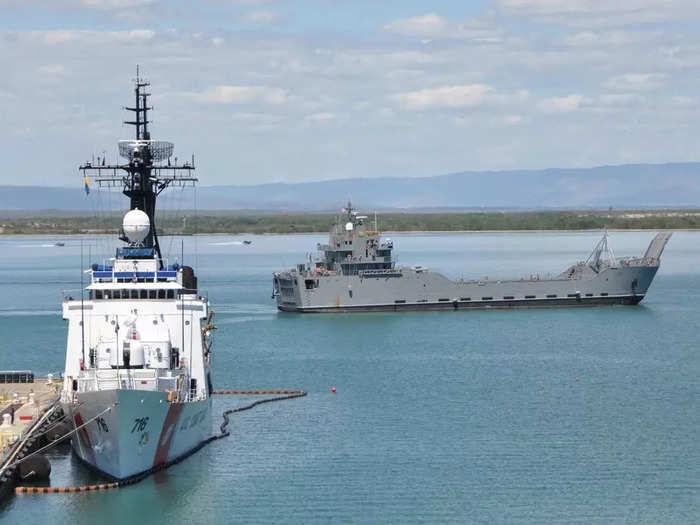
The US Navy isn't the only military branch with a fleet of maritime vessels. The US Army has its own naval force to transport soldiers and the combat gear they need, a fleet that includes landing craft, tugs, barges, and more.
The Besson, the lead ship in its class, is a logistics support vessel, an amphibious landing ship designed to bring cargo to shallow terminal areas or underdeveloped coastlines, thanks to its ability to create a floating bridge.
Capabilities

At 273 feet long with more than 10,000 square feet of deck area, the Besson-class vessels are among the US Army's largest ships.
During Logistics Over-the-Shore operations, LSVs can carry up to 900 metric tons. During intra-theatre line-haul, they can carry up to 2,000 metric tons.
The Besson is capable of hauling up to 15 Abrams main battle tanks at a time, up to 82 20-foot-long shipping containers, a tugboat, or even a C-17 Globemaster aircraft.
Apart from transporting massive amounts of cargo along main supply routes, Besson-class LSVs also act as advanced bases and strategic sealifts, capable of deploying weaponry and vehicles to ports, harbors, inland waterways, and beach landings.
Named after the first commander of the Army Materiel Command
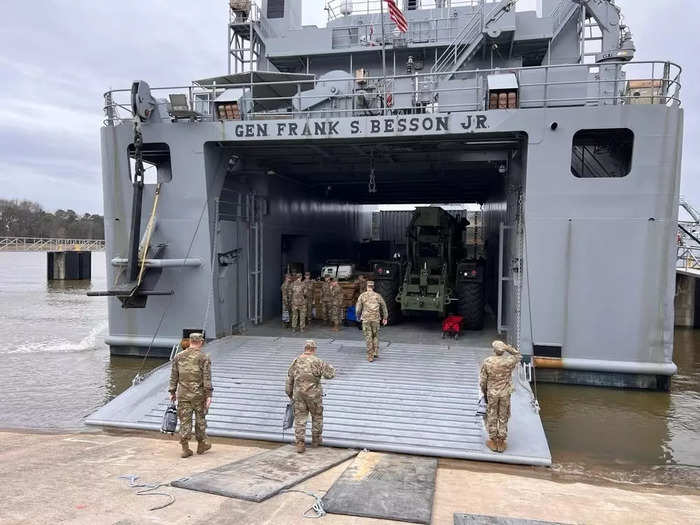
The ship bears the name of the first chief of the US Amy Materiel Command, Gen. Frank S. Besson. Born in Detroit in 1910, Besson later attended West Point in 1932 and graduated in the top 10 of his class.
In 1945, Besson became the youngest Brigadier General in the Army Ground Forces during World War II at the age of 34. He helped oversee the flow of war equipment from the US to the Soviet Union. In 1962, he was promoted to Lt. Gen. and became the first commander of the Army Materiel Command.
Following his retirement in 1969, he returned to service the following year to join the Joint Logistics Review Board as a chairman, later being appointed as a founding director and first CEO of the National Passenger Corporation by President Richard Nixon in 1970.
Besson died of cancer in July 1985 at the Walter Reed Army Medical Center. He was 75.
En route to Gaza
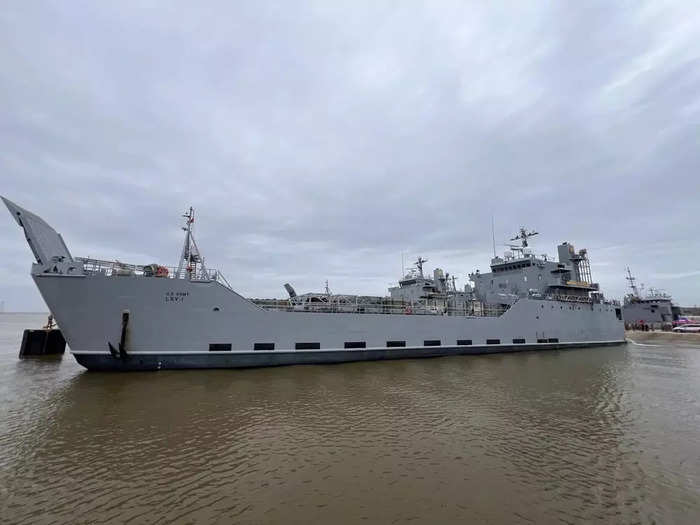
US President Joe Biden announced during his State of the Union address on March 7 that the US plans to build the port on the Gaza coast to deliver more food, water, medicine, and temporary shelters.
The Besson departed from Joint Base Langley-Eustis in Virginia on March 9 with equipment to build the Gaza port — less than 36 hours after Biden announced the Pentagon's plan to build the pier.
Biden said "no US boots will be on the ground" in building the port, which would "enable a massive increase in the amount of humanitarian assistance getting into Gaza every day."
More USAVs set sail for Gaza
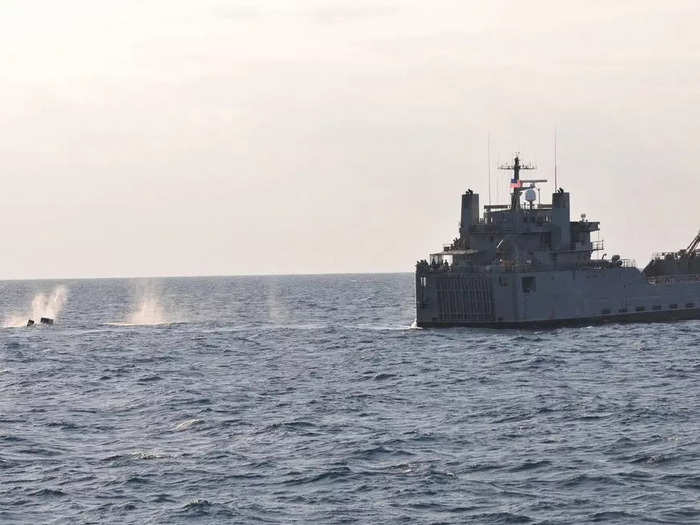
Two days after the Besson set sail for the Mediterranean, four more Army watercraft followed, carrying more materials for the port.
More vessels are set to depart for the East Mediterranean over the next month, including smaller landing craft, USAV Monterrey, USAV Matamoros, and USAV Wilson Wharf, led by Besson-class USAV SP4 James A. Loux.
An offshore pier and interlocking causeway
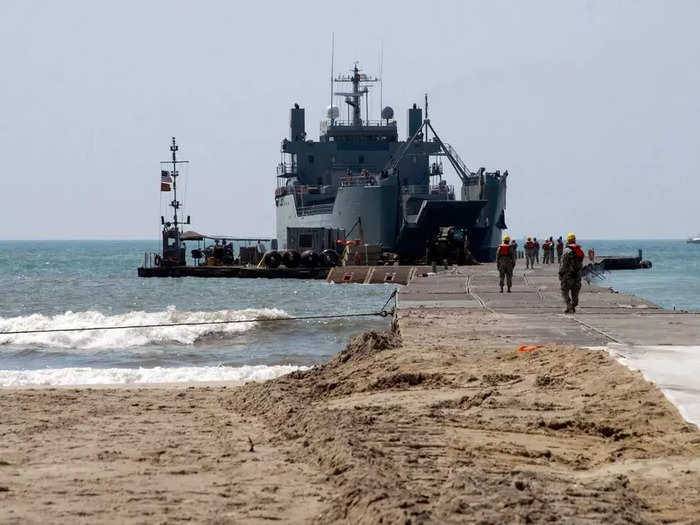
The temporary pier is set to be assembled like Lego bricks, according to PBS News Hour, with 40-foot-long interlocking pieces of steel that will form the pier and causeway that spans up to 1,800 feet long and two lanes wide.
The plan is that vessels would offload supplies and aid on the temporary offshore pier, which smaller military vessels would transport to the temporary causeway for it to be driven to the shoreline.
US Army Brig. Gen. Brad Hinson told USNI News that US Central Command and the Defense Department are "working with partners over in the area" to set up the pier.
"I'm not gonna go into the specifics of who we're working with in order to anchor the pier, but we will have some assistance to be able to do that," Hinson said. "We will not be on the shore, but we will be on the pier, and that pier can extend anywhere out from shore from 800 feet up to 2,000 feet."
Other LSVs
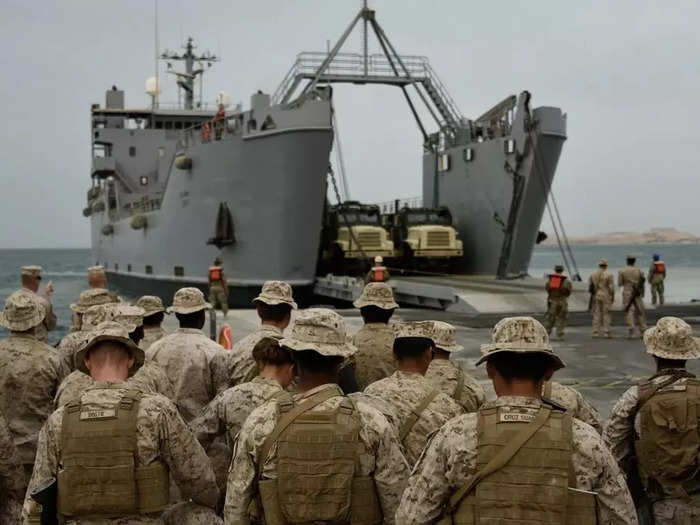
There are eight LSVs operated by the Army in total, which succeeded the Newport-class tank landing ships, the last of which retired in 2002.
Six ships — the Besson, CW 3 Harold C. Clinger, Gen. Brehon B. Somervell, Lt. Gen. William Bunker, Maj. Gen. Charles P. Gross, and Specialist 4 James A. Loux — were built for the Army between 1987 and 1994.
In July 2005, the Army's seventh LSV, SSGT Robert T. Kuroda, was delivered, followed by the MGEN Robert Smalls in June 2006.
Helicopter-capable LSVs
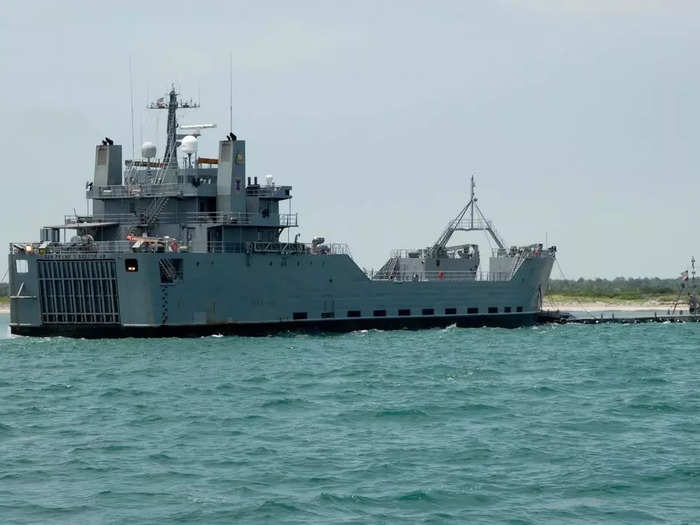
LSVs are versatile ships that can be adapted to the assigned missions.
The helicopter-capable LSV variant, currently in service with the Philippine Navy, transports and discreetly deploys helicopters and patrol boats.
Beneath the patrol boats and intercept craft on its stern, helicopter-variant LSVs conceal attack helicopters below its modular flight deck, transporting firepower without an obvious display of force.
Semi-submersible LSVs
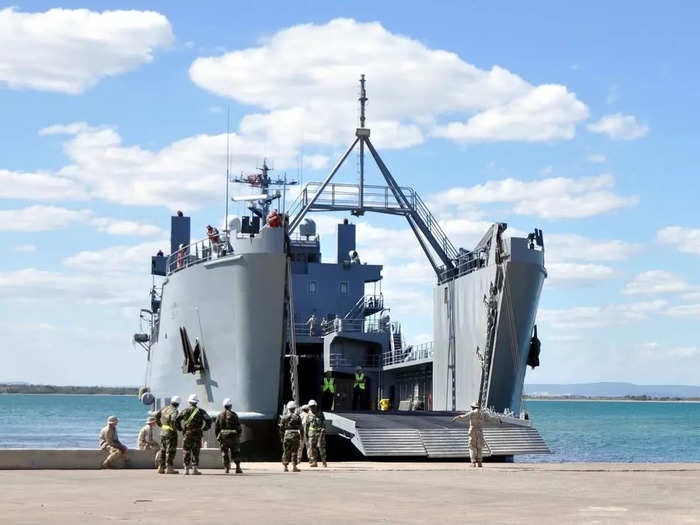
The semi-submersible LSV variant, the more common type of the Besson-class vessel, has mobile repair and maintenance capabilities, transporting and launching cargo and vehicles as well as providing dry-dock and repair.
With a semi-submergible hull, the LSV can load and unload large floating cargo, patrol boats, land vehicles, and more.
Troop-carrier LSV
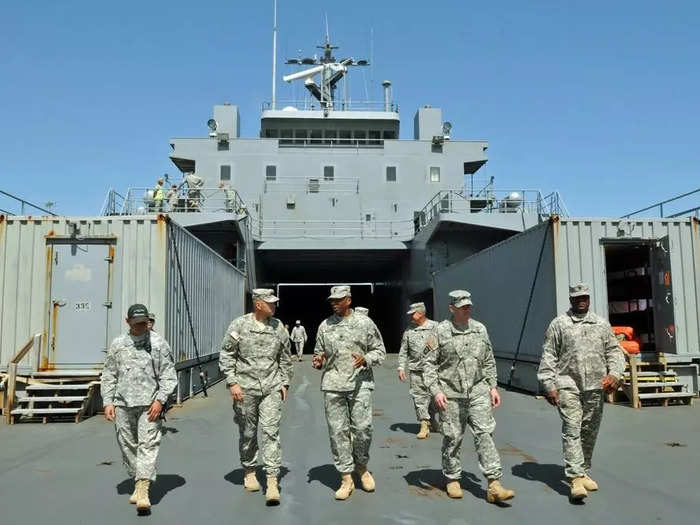
The final type of LSV, the troop carrier, is used to efficiently deploy and relocate mariners and equipment. The troop-carrying LSV is fitted with canvas bunks and separate berthing areas, capable of accommodating 144 troops and six officers.
Popular Right Now
Popular Keywords
Advertisement